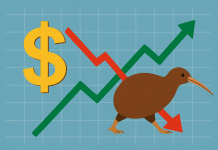Introduction
Volatility in the foreign exchange (forex) market has made a dramatic comeback this week, driven by a cocktail of conflicting signals from central banks, a weakening U.S. dollar, and market anticipation of crucial macroeconomic data releases. Traders and analysts alike are bracing for potentially turbulent sessions as global currencies react to growing uncertainty over U.S. monetary policy and rising inflationary pressures. Over the last 48 hours, forex markets have exhibited sharp swings, particularly in pairs like EUR/USD, USD/JPY, and GBP/USD. The renewed volatility has disrupted recent periods of relative calm, catching both institutional and retail traders off guard. According to data compiled by Investing.com, FX volatility indices surged by over 12% on Monday alone.
At the center of this volatility storm lies the U.S. Federal Reserve. Mixed messaging from central bank officials has fueled speculation that the Fed may be softening its hawkish stance, even as inflation remains elevated. This ambiguity is creating uncertainty, driving sharp reactions in currency markets and renewing focus on upcoming economic indicators, particularly Friday’s U.S. non-farm payroll (NFP) data and fresh inflation reports from Europe and the United States.
The Fed’s Messaging Problem: Hawkish Or Dovish?
At the heart of recent market turbulence is the growing divergence between what the Federal Reserve is signaling and what markets are interpreting. In recent public appearances, Fed Chair Jerome Powell and several FOMC members have delivered seemingly contradictory remarks. While Powell hinted at the possibility of further rate hikes if inflation remains sticky, other officials have suggested that monetary tightening may be nearing its end.
This has left investors scrambling to adjust expectations, which in turn has triggered fast-moving currency trades.
“We are not done yet,” Powell said during a panel discussion last Friday. “If the data shows continued inflation pressure, further policy action will be required.”
However, just a day earlier, Federal Reserve Bank of Chicago President Austan Goolsbee took a noticeably dovish tone, stating that the Fed should consider the impact of high interest rates on employment and financial stability before tightening further.
These conflicting narratives are making it difficult for traders to position themselves confidently, increasing the likelihood of sudden moves in forex markets.
U.S. Dollar Slides As Traders Eye Labor Market Data
The U.S. dollar has come under pressure in recent sessions, largely due to market uncertainty surrounding Friday’s non-farm payrolls report. According to FXStreet, the greenback slipped against most major currencies on Monday, with the Dollar Index (DXY) falling below the key psychological threshold of 104.5.
Currency pairs such as EUR/USD and GBP/USD saw strong gains, while USD/JPY dropped more than 0.8% during the session, its sharpest intraday move in over a week.
“Traders are in a wait-and-see mode,” said Samantha Lee, currency strategist at Citibank. “If the jobs data comes in weak, we may see the dollar tumble further. But a strong report could push the Fed back toward a more hawkish footing.”
The labor market data is seen as a crucial indicator of the Fed’s next move. A slowdown in hiring or wage growth may reinforce expectations that the central bank will pause its tightening cycle, adding downward pressure on the dollar.
Inflation Data On The Horizon: Europe And U.S. In Focus
Adding another layer of complexity, markets are bracing for a fresh round of inflation data due later this week. Consumer Price Index (CPI) readings are scheduled from both the Eurozone and the United States, and any surprises could have a dramatic impact on currency valuations.
According to ForexLive, volatility is likely to spike around the time of these releases, especially if inflation prints come in significantly above or below forecasts.
“If U.S. CPI surprises to the upside, the Fed will be forced to maintain its hawkish posture, reigniting dollar strength,” said Martin Brunner, FX strategist at Deutsche Bank. “Conversely, soft numbers could signal a dovish pivot.”
The Eurozone is also a focal point, with inflation in Germany and France already showing signs of persistent pricing pressure. The European Central Bank (ECB) has remained cautious, with officials recently stating that they will “monitor data carefully” before making additional policy moves.
These crosswinds are contributing to heightened uncertainty and bigger intraday price swings.
Technical Analysis: Breakouts And Reversals
From a technical perspective, the recent surge in volatility has created multiple breakout and reversal setups across major currency pairs. For instance, EUR/USD broke above the 1.0900 resistance level, supported by strong bullish momentum, while USD/JPY failed to hold above 155.00 and reversed sharply downward.
Daily and weekly charts now indicate the possibility of expanded trading ranges in the short term. Traders using indicators like Bollinger Bands and Relative Strength Index (RSI) are seeing increased volatility bands and momentum divergences.
“We’re in a breakout environment,” said Alana McGrath, head of FX trading at BlackRock. “The market is hypersensitive to every data point and policy comment, making it ideal for technical traders who thrive in fast-moving conditions.”
Impact On Emerging Market Currencies
The rise in volatility hasn’t been limited to G10 currencies. Emerging market (EM) currencies such as the Mexican peso (MXN), South African rand (ZAR), and Turkish lira (TRY) have also experienced significant fluctuations in recent days.
The volatility is being driven by both domestic and external factors — including local inflation risks, political uncertainty, and shifting capital flows.
EM currencies tend to be more sensitive to shifts in global risk sentiment and U.S. interest rate expectations. When the dollar weakens, EM assets generally benefit from capital inflows. However, heightened volatility can also prompt investors to reduce exposure to higher-risk assets, triggering outflows and weakening EM currencies.
Retail Traders Face New Challenges
For retail forex traders, the current environment presents both opportunities and risks. Higher volatility creates the potential for larger profits on short-term trades — but also increases the chances of margin calls, slippage, and unexpected losses.
Brokers have reported a surge in trading activity over the past 48 hours, especially in high-beta pairs like GBP/JPY and AUD/USD. At the same time, platforms such as MetaTrader 5 and cTrader have issued advisories warning users about increased spreads and execution delays during high-volatility sessions.
“We’ve seen a 30% spike in trade volume since the start of the week,” reported eToro. “But we’re also seeing a rise in liquidation alerts due to rapid price swings.”
Traders are advised to use tighter risk management protocols, including stop-loss orders and reduced leverage, until the market settles into a more predictable pattern.
Institutional Outlook: What’s Next For Forex Markets?
Institutional forecasts are mixed, reflecting the same uncertainty driving the recent volatility. While some analysts expect the current spike to be short-lived, others believe we are entering a new phase of prolonged market turbulence.
Morgan Stanley issued a note Monday suggesting that forex volatility will remain elevated through at least mid-June due to a cluster of data events and central bank meetings.
“There’s simply too much uncertainty right now for traders to sit back,” the note stated. “The inflation picture is blurry, and the Fed is not helping by sending conflicting signals.”
JPMorgan echoed the sentiment, warning clients to brace for “choppier-than-normal price action” over the next four to six weeks.
Conclusion
The return of forex market volatility underscores the importance of adaptability in currency trading. Whether you’re a seasoned institutional player or a retail trader using a mobile app, the key takeaway is clear: this is not the time for complacency.
With central banks waffling, inflation stubbornly high, and data releases coming in rapid succession, traders must remain agile and informed. As this week progresses, all eyes will be on Friday’s jobs report and next week’s CPI data — both of which have the potential to dramatically reshape the trading landscape once again.




